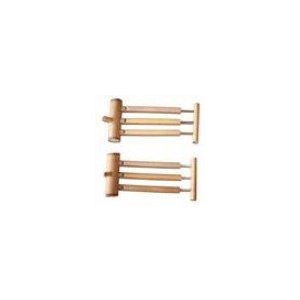Their primary purpose of the whistle is to deter pigeon-hungry falcons. However, when falcons become accustomed to its sound, the whistle loses its protective power. Sometimes the whistles can even hinder a pigeon flock’s safety by attracting clever falcons. Chinese Pigeon Whistles are usually attached to “flights” or “tipplers,” which differ from our friend, the “homer.” Flights and Tipplers are bred for endurance, whereas homers are bred for speed. The flight and the tippler do not travel long distances, instead they circle around a particular location. They are the marathon runners of pigeondom, while homers are the sprinters, quickly racing long distances to reach their homes.
Hi,Ummm, i have no idea i’m afraid, and have no idea where you could look for them either… have you tried getting in touch with pigeon racing clubs or fancy pigeon clubs in New York? your project sounds really interested & would love to know more about it. best wishes,
Alex
THEN I discovered the Clarence McKenzie Lewis papers at the Mertz Library of the New York Botanical Gardens. In this collection, there are 36 Chinese Pigeon Whistles in the “Artifacts” section! Clarence McKenzie Lewis was a board member of the New York Botanical Gardens. He was also an avid plant collector. He made his money as an engineer and an investment banker. In New Jersey, he commissioned Alexander Pope to build Skylands Manor, which is now home to the New Jersey Botanical Gardens.
I went up to visit the pigeon whistles at the Library. I paid a flat $15 fee to take as many pictures as I wanted, but I could not use a flash. I took a picture of each whistle, and took note of how many of each type of whistle there was in the collection.


When I made an appointment I asked if I could hear what the whistles sounded like “when air passes over them”. The Librarian responded that no, the whistles could not be blown. However, I did make a recording of me handling the pigeon whistles, which I could do as much as I wanted. You can hear me taking them out of the boxes lined with tissue, rub the textured surfaces, drag my fingers across the bamboo pipes, and tap on the gourd.

I don’t know for sure where Clarence McKenzie Lewis obtained his collection of whistles, but I suspect that they came from his Mother-in-law, who was an oriental scholar and wrote a book on Chinese Rugs. I don’t think that I’ll ever be able to substantiate this hypothesis, but perhaps someone else could…
So now the question becomes, if I could hear these whistles flying around Skylands Manor or the New Jersey Botanical Gardens what would they sound like? The videos from Annie Dunning and Project Pigeon have given me some clues.
The most complex part of the Chinese Pigeon Whistle sound is the doppler effect that occurs when the pigeons pass over the head of the listener. Because of this, the sound cannot be easily recreated using a typical instrument with fixed notes. I thought about using a theremin, but decided that it would sound too electronic. I purchased this bamboo slide whistle, which should do the trick. However, the slide parts stick a little too much, so I need to loosen them up without breaking them.


One Comment
1 shannon wrote:
What a lovely story of your own research process, Hethre! And what a beautiful sound those whistles make! I hope you’ll be able to experience it for yourself in-person one day — but until then, and for the purpose of the map, maybe you could extract the audio from one of the YouTube videos?